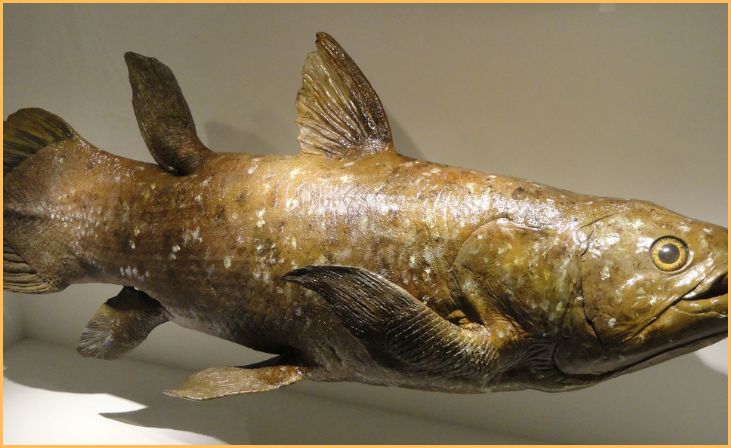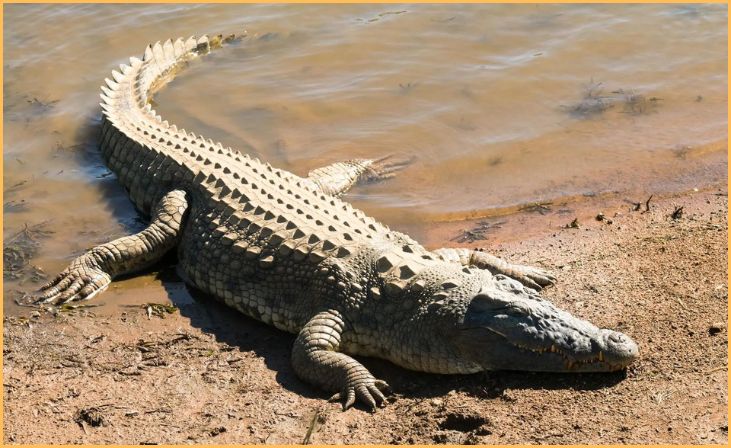Prehistoric animals – In the tapestry of Earth’s history, remnants of prehistoric life continue to persist, defying the conventional understanding of extinction. These remarkable survivors, ancient in origin yet resilient in their adaptations, offer a living connection to epochs long past.
From the enigmatic depths where the coelacanth glides to the ancient reptilian guardians, the crocodiles, and the unique tuatara, these creatures embody the tenacity of life over eons. As we delve into their stories, we unravel the mysteries of slow evolutionary changes, niche occupations, and intricate reproductive strategies that have allowed them to endure.
However, their existence is not without challenges, as human activities threaten their habitats. This exploration sheds light on the imperative of conservation efforts and the responsibility we bear to safeguard these living relics, preserving not only their ancient lineage but also the rich tapestry of our planet’s biodiversity.
Prehistoric animals that still roam the Earth
Coelacanth

The coelacanth, a deep-sea fish, was believed extinct for 66 million years until its rediscovery off the coast of South Africa in 1938. This remarkable living fossil provides insights into prehistoric marine life, displaying an unchanged body structure over eons. With its lobed pectoral fins and unique characteristics, the coelacanth has survived as a relic from the depths of evolutionary history, serving as a living link to a distant past.
Also, Read – 8 Giant North American Ice Age Animals: Fascinating Giants of the Prehistoric Era
Horseshoe Crab
The horseshoe crab, a marine arthropod, has thrived virtually unchanged for 450 million years. Renowned as a living fossil, it has weathered the ages with minimal evolutionary alterations. These arthropods, with their distinctive horseshoe-shaped carapace and long tail spike, have persisted through vast geological time scales.
Beyond their ancient appearance, horseshoe crabs play a vital role in modern medicine, as their blue blood contains a substance used to detect bacterial contamination in medical equipment. Despite the passage of eons, the horseshoe crab stands as a testament to the endurance of certain species in the ever-evolving tapestry of life.
Nautilus
The nautilus, a cephalopod mollusk, is a living relic that has navigated Earth’s oceans for hundreds of millions of years. With its iconic coiled shell and simple anatomy, the nautilus offers a glimpse into the ancient seas.
Residing in deep waters, it shares ancestry with squid and octopuses but retains a more primitive form. Despite the vast changes in marine life over epochs, the nautilus has persisted with minimal modifications.
Its slow growth and remarkable shell design make it a fascinating example of evolutionary endurance, surviving as a living connection to the prehistoric origins of cephalopods.
Crocodiles

Crocodiles, formidable reptiles, have roamed the Earth for about 200 million years, displaying remarkable resilience through the ages. With an evolutionary history dating back to the Mesozoic era, they’ve adapted little, embodying an ancient design that has stood the test of time.
These apex predators, characterized by their armored bodies and powerful jaws, remain virtually unchanged since their prehistoric ancestors. Excelling in both aquatic and terrestrial environments, crocodiles showcase an exceptional evolutionary success story.
Their survival instincts, robust physiology, and mastery of various ecosystems underscore their enduring presence as living descendants of a primordial past, reminding us of the ancient ties between reptiles and Earth’s evolutionary journey.
Also, Read – Mastering Parrot Tricks: A Step-by-Step Guide to Clicker Training
Tuatara
The tuatara, a reptile native to New Zealand, stands as a living fossil with a lineage stretching back over 200 million years. Despite its lizard-like appearance, the tuatara belongs to a unique order, Rhynchocephalia, distinct from lizards and snakes.
Renowned for its slow rate of evolution, the tuatara retains primitive features reminiscent of its ancient relatives, such as a third eye on its forehead.
Surviving in isolation on New Zealand islands, this resilient species serves as a living link to the distant past, embodying the continuity of life across geological eras and showcasing the adaptive persistence that defines the world’s oldest living reptile lineage.
Ginkgo Biloba
Ginkgo biloba, a living fossil, is the last surviving member of its plant family, dating back over 200 million years. Characterized by distinctive fan-shaped leaves, it has endured virtually unchanged through millennia.
Revered for its resilience, the ginkgo has adapted to diverse climates and urban environments. Beyond its aesthetic appeal, the tree holds cultural significance and is often used in traditional medicine.
Ginkgo biloba’s hardy nature and ability to withstand environmental shifts make it a testament to the enduring vitality of certain plant species. As a living relic, the ginkgo serves as a botanical time capsule, linking the present to the ancient landscapes of Earth’s past.
Lamprey

The lamprey, a jawless fish, traces its existence back hundreds of millions of years, making it a living testament to ancient aquatic life. With a primitive, eel-like appearance, the lamprey showcases a remarkably unchanged anatomy. Lacking true scales and possessing a circular mouth filled with rasping teeth, these creatures have persisted through evolutionary time.
Found in both freshwater and marine environments, lampreys represent an enduring lineage that predates the emergence of jawed vertebrates. Though often considered parasitic due to their feeding habits, lampreys serve as a living connection to the early stages of vertebrate evolution, offering insights into the adaptability and survival strategies of species that have withstood the test of time.
Conclusion
In conclusion, the coexistence of prehistoric animals with the modern world serves as a testament to the enduring power of evolution. As stewards of the planet, our responsibility lies in recognizing and safeguarding these living links to our past. Conservation efforts must intensify, acknowledging the delicate balance between progress and preservation.
The survival of these ancient species not only enriches our understanding of Earth’s history but underscores the urgency of nurturing biodiversity. As we navigate the challenges of the Anthropocene, our commitment to cohabiting with these remarkable survivors reflects our dedication to a harmonious and sustainable future for both prehistoric creatures and humankind.
FAQs
Some examples include the coelacanth, crocodiles, tuatara, and horseshoe crabs. These species have ancient origins and have managed to survive through millions of years of evolutionary changes.
These animals have adapted to their environments over time, often evolving slowly to fit specific niches. Their ability to occupy unique ecological roles, coupled with reproductive strategies and evolutionary resilience, has contributed to their enduring presence.
Slow evolutionary changes, niche occupation, and unique reproductive strategies are key survival mechanisms. These animals have maintained conserved traits, fitting into specific ecological niches and demonstrating longevity in their reproductive cycles.







